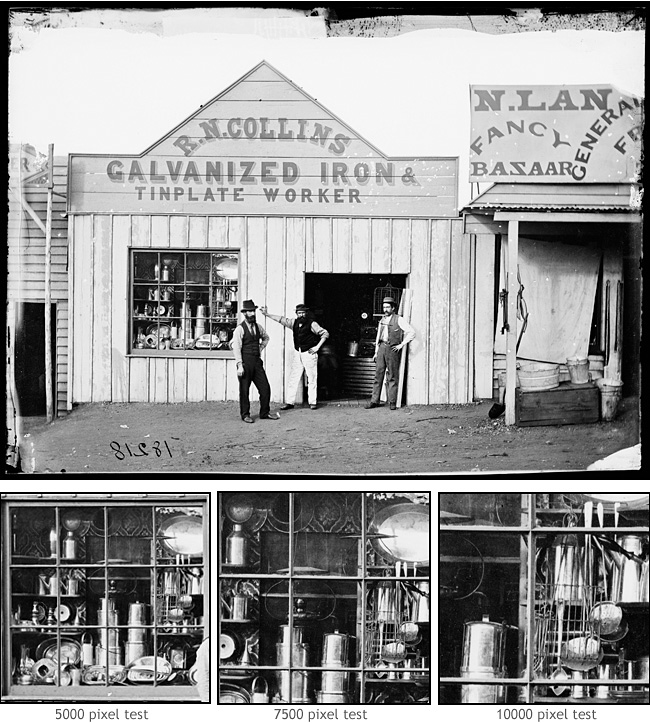Resolving the image
As discussed in last week's post we have recently made important decisions on the Holtermann Collection digitisation standards. Although the library already has an established set of digitisation guidelines new considerations needed to be made for such an important and high quality collection of glass plate negatives along with the introduction of our new glass plate scanner.
We did not take this process lightly and so began by researching the digitisation practices and standards of our fellow cultural institutions, most notably the National Information Standards Organisation of America, National Government Archives of America and the National Library of Australia. We also looked at glass plate digitisation case studies, such as the Wellcome Library's John Thompson collection, to get a feel for the workflows and technical specifications used by other world class institutions.
Based on this gathered information we determined to perform a series of test scans in three different pixel dimensions (approximately 5 000, 7500 and 10000 pixels in length) to see how much detail the Holtermann negatives really hold and how well we could capture it. We performed these tests using the scanner's true optical resolution to ensure that no pixel interpolation occurred. This means the actual pixel dimension is closer to 11000 pixels and can vary slightly because the glass plates are not all exactly the same size. Below is an image we selected for test scanning due to it's high level of detail and sharpness showing the detail sections of the tests.

Once we saw the truly impressive amount of information stored in these negatives we were determined to save archival master files to our highest test scan resolution of approximately 10000 pixels on the longest edge creating a 450MB, uncompressed, 16 bit, Adobe 1998 RGB TIF file from each plate. Including our 8 bit, Gray Gamma 2.2 sub-master file derivatives that's nearly 3 terabytes of total storage space needed in total.


